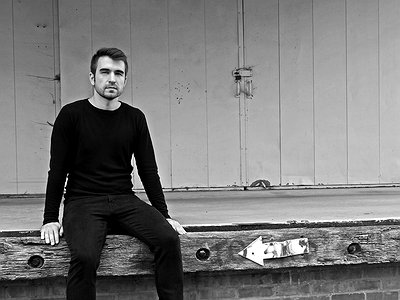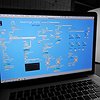Part 2
Do you feel it important that an audience is able to deduct the processes and ideas behind a work purely on the basis of the music? If so, how do you make them transparent?
Not at all. I don’t even mind if the audience doesn’t know that a piece is generative. I try not to fetishize the technology. I use software processes out of necessity because they’re currently the best way to realize my ideas, but I don’t ascribe any inherent value to pieces (including my own) simply because they use the computer. This is simply the way my work has evolved. If I could find a less technical way of working, I’d use it.
The relationship between music and other forms of art – such as painting, video art and cinema - has become increasingly important. How do you see this relationship yourself and in how far, do you feel, does music relate to other senses than hearing alone?
There was a time in my life when I was living abroad and hanging around a lot of visual artists: painters, sculptors, performance artists, and so on, and scrupulously avoiding contact with musicians, especially other composers. I spent a lot of time thinking about how to make a piece of music more like a sculpture or a painting. Perhaps this is what drew me, later on, to Satie as the subject of my dissertation. He had tried to do more or less the same thing. While I eventually realized that this was an essentially impossible goal, I also realized that my instincts in this direction put me in good company. The underlying intention was to rethink what a piece of music could be by pretending that I was working in another art form. While not all composers have tried exactly that experiment, plenty of them—from Pérotin to Tallis, Beethoven to Stockhausen—have sought to expand the concept of what music is. In addition to his experiments “transposing” painting into music, Satie’s other extra-musical preoccupation was with text, fragments of which he inserted in his scores as bizarre (but unperformed) narrative glosses on the music. The use of text is another thing I have in common with Satie. (I’d say that I stole it from him but the incorporation of spoken text in my work predates my extensive study of his.)
Although I have collaborated with a number of visual artists, I find using spoken text—usually of my own devising—the most suitable for my purposes since it remains in the auditory realm but has the potential to lend a cinematic or dreamlike ambiguity to the music. And because melodrama and radio plays are no longer widely shared cultural reference points, the integration of spoken text with music represents territory that, although not new, can be satisfyingly revisited.
How would you define the term “interpretation”? How important is it for you to closely work together with the artists performing your work?
Increasingly, I use my collaborations with performers as a way to mine unforeseen possibilities from my materials. After I started writing generative works, where the outcome of each piece was not predetermined, I asked myself: what makes me so sure that I have considered all possibilities and chosen the very best solutions for every moment of the piece? Wouldn’t it make sense to leave some room for the contributions of the players? I have to be strategic about this sort of thing, of course. I don’t want music written by committee and I don’t want entirely improvised music, either. Finding subtle ways to benefit from the collective genius of the performers I work with while remaining the final aesthetic arbiter of my music is one of my abiding preoccupations.
The effect of a piece doesn't merely depend on the performance of the musicians, but also on the place it is performed at. How do you see the relationship between location and sound? In how far do you feel the current system of concert halls is still the right one for your music – or for contemporary music in general?
I often say that I don’t write music to be performed in a space. My work creates the space as well as the music in the space. Put another way, I mix a variety of sound materials, such as field recordings, acoustic and electronic samples, spoken texts, live instruments, etc., so that the boundaries between environment and composition are blurred. The most extreme example of this might be an early improvisation I did at a college venue where I knew in advance that people would be playing ping pong in the next room during my performance. To neutralize the potential distraction I made a tape part that included a prominent selection of ping pong samples, which I integrated into my performance on a Magnus Chord Organ. This would have been about 2008. Since then, I have always felt excited about contextualizing my musical materials in this way. It’s quite empowering.
The role of the composer has always been subject to change. What's your view on the (e.g. political/social/creative) tasks of composers today and how do you try to meet these goals in your work?
I have no view on perceived role(s) of composers beyond the principal role of making music. It would be presumptuous of me to say, for example, that composers should teach, since there are many great ones who don’t. Personally, I’m quite mystified by the source of my desire to write music. All I know is that I wake up every day wanting to do it and fall asleep thinking about how I could have done it better. I’m keenly aware of the enormous privilege as well as the great deal of luck that allows me to live my life in art. Claiming a larger role for myself (or on behalf of other composers) just isn’t for me.








